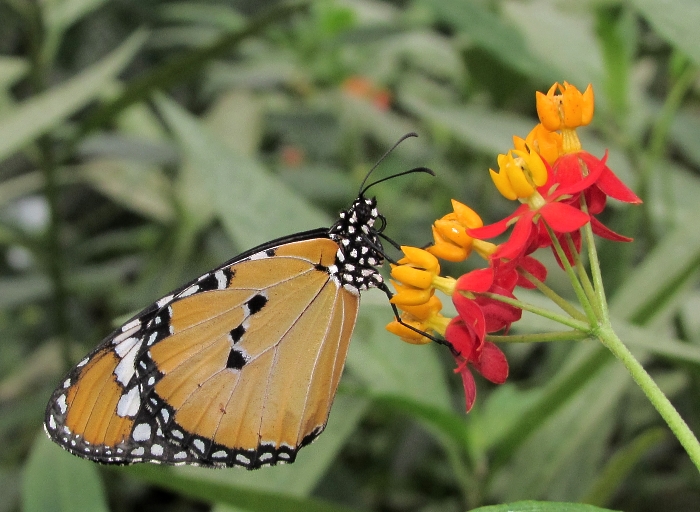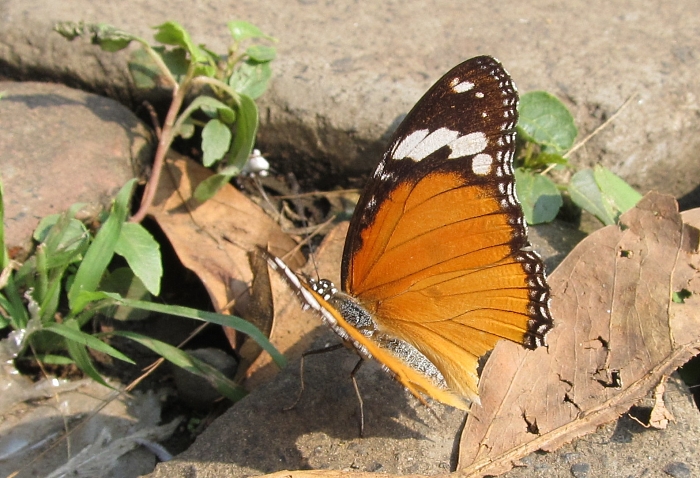
Male, India (Kolkata), April 2010

Male, India (Kolkata), April 2010
Danaus chrysippus
Refresh page if pictures don't load fully:

Male, India (Kolkata), April 2010

Male, India (Kolkata), April 2010

Female, India (Tirupur), October 2012

Male, India (Tirupur), October 2012

Female, Papiliorama butterfly house, Switzerland - note the absence of
the large black-and-white spot beneath the hindwing cell

Male, also at the Papiliorama - note the black-and-white spot beneath
the hindwing cell

Male, form alcippus,
Papiliorama, Switzerland
Male, La Palma - April 2001
Male, La Palma - April 2001
Male, La Palma - April 2001

For comparison - a female of the unrelated Hypolimnas misippus,
photographed in Mumbai in 2012

The underside of the same butterfly

Distribution - also found in the Canaries
This fascinating butterfly
has the distinction of being recognisably depicted in the oldest known butterfly painting
- a three and a half thousand year-old picture of duck-hunting in
Luxor. It also has the distinction of being a beautiful butterfly and
it is easy to understand why that ancient artist chose to figure it.
The plain tiger is found widely in Africa and Asia and even flies very
locally in Australia (the more widespread tiger in Australia is treated
now as a separate species, Danaus
petilia). In recent decades it has been expanding its
range in
southern Europe and may now be seen almost anywhere in the
Mediterranean and on the Atlantic coast of Iberia. That said, my only
'European' sightings have been on the island of La Palma in the
Canaries, where I found it in coastal gullies in the south-east of the
island.
Like the monarch, the plain tiger uses various milkweeds as hostplants and is toxic to birds and other predators. Also like the monarch, it has mimics, some quite unrelated, which copy its patten. Most striking is the female of Hypolimnas misippus, another widespread African and Asian butterfly, also now found in the Canaries, the Azores and Madeira. As the pictures above show, the mimicry is very good and this is the only species you might reasonably confuse with the plain tiger. Female H. misippus has less spotty, more zig-zag white in the black borders and lacks the discal spots on the upperside of the hindwing. The male is entirely different. Male and female plain tigers may be separated by the fourth dark spot on the hindwing, below the cell - strongly black and white on the underside. Form alacippus, which occurs in males and females, has white in place of orange on the upperside of the hindwing.
The species is continuously
brooded and
may be seen all year round, though away from the breeding areas
migrants are more likely to be seen in summer when numbers build up.